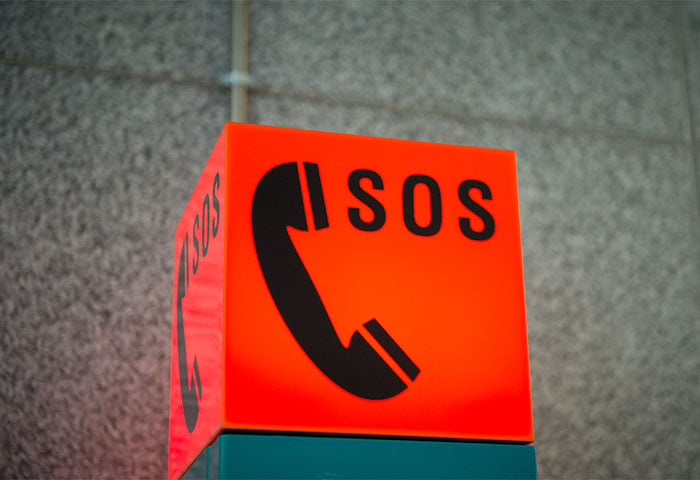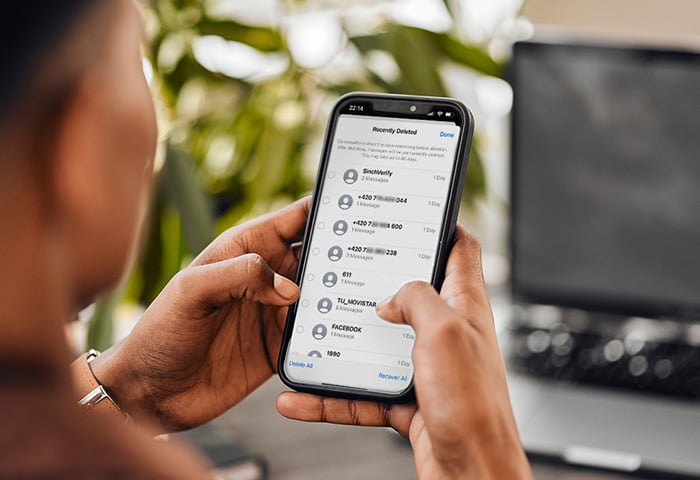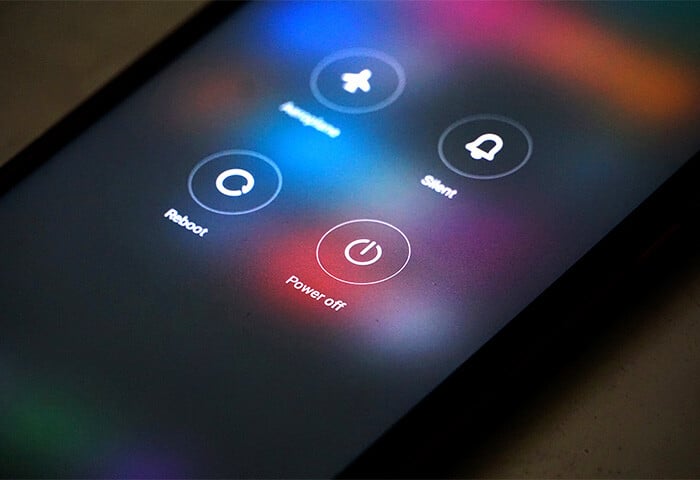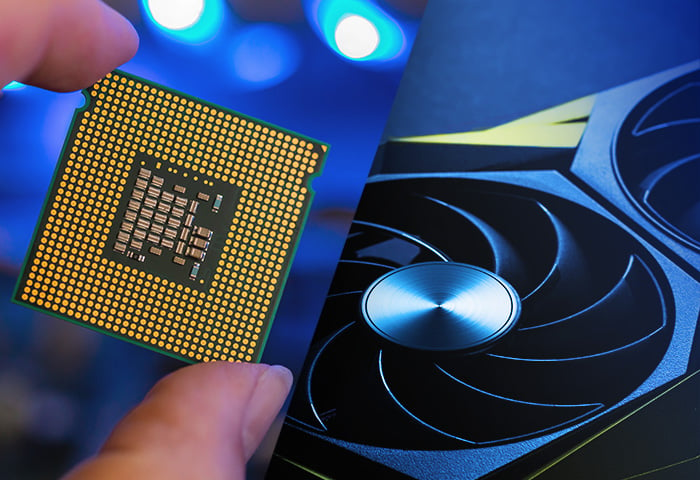Why is my internet not working?
If you have no internet connection, this could be due to an ISP outage, extremely slow internet speeds, hardware problems, a security breach, adverse weather, network misconfigurations, or device overload.
Here’s some more information on the most common causes of internet outages:
-
Modem or router issues
These devices have a finite lifespan and deteriorate with long-term use. Problems could also be due to router misconfiguration, or a faulty cable.
-
Internet Service Provider (ISP) outages
From maintenance to mishaps, the problem could be with your ISP. Check online (if you have data) or call your provider to confirm network outages.
-
Slow internet speeds
The internet could be working — just very slowly. Slow internet could be caused by too many devices on the network using large amounts of bandwidth. ISPs can also intentionally slow your internet to manage network traffic — this is known as throttling.
-
Hacked router
Cybercriminals can hijack routers to install malware or alter settings to exploit a network. This compromises your data and devices and can disrupt internet access.
-
Adverse weather conditions
Storms or heavy rainfall can damage physical infrastructure like cables or antennas, disrupting internet connectivity.
-
Incorrect network settings
Misconfigured IP addresses or DNS will stop your device from connecting.
-
Outdated drivers
Your network drivers could be outdated or faulty, meaning your device software can’t communicate with the network hardware.
Why does my Wi-Fi say connected but no internet?
The error message “connected, no internet" typically indicates a problem with your modem or router, an external problem with your ISP, or IP address conflicts. It means that while your device is connected to the router — and your local network — it’s unable to communicate with the wider internet.
How to fix no internet connection
Common ways to fix problems with your internet connection are to restart your router, check your cables, minimize connected devices, update your drivers, and use a VPN. It’s also worth checking you’re connected to the right network.
Here’s a closer look at how to troubleshoot internet connection issues:
Restart your router and device
Problems with the router are often the main cause of internet connectivity issues. Sometimes, simply restarting your router can quickly resolve your no-internet problem:
-
Press the power button on your router to turn it off.
-
Unplug the router’s power cable and wait for one minute.
-
Plug the power cable back in and turn your router back on using the power button.
-
Wait for your router’s startup to complete, then test your internet connection to see if the router issue has been resolved.
Change broken wires and cables
Examine your router cables along their entire length for any signs of wear or damage, and make sure they’re connected properly. Cables at sharp angles, tangled tightly, or pinched by furniture or other objects will affect the router’s performance. Replace damaged cables with new, compatible ones, and reorganize your cables using ties or boxes to avoid similar problems in the future.
Remove some connected devices
Bandwidth overuse by computers, phones, tablets, game consoles, and smart appliances all on the same network may affect your internet connection. If you have devices that are downloading or uploading large files or that are online when they don’t need to be, disconnect them and only keep the essentials on.
Update the drivers for your network adapters
If you have no internet connection, you may have a problem with your PC’s network drivers. You can try updating the driver to fix the problem.
Manually update drivers on Windows
Here’s how to update drivers manually on Windows:
-
Type Device Manager into the search box on your taskbar and launch it.
-
Expand Network adaptors, right-click each driver, and select Update Driver.

Use an automatic driver updater
AVG Driver Updater scans for network and other drivers to find the right ones for your PC. It can automatically find and fix driver-related Wi-Fi problems and help avoid similar issues in the future.
Here’s how to automatically fix network drivers using AVG Driver Updater:
-
Download and install AVG Driver Updater.
-
Run a scan and choose to update just your network driver or all drivers the app finds.

Use a VPN
If your ISP is limiting your bandwidth, using a VPN (Virtual Private Network) can help to restore your internet speed. By encrypting your internet traffic, VPNs help prevent your ISP from monitoring your activity and throttling your connection. You can try AVG Secure VPN for 60 days for free, on up to 10 devices.
Advanced troubleshooting for internet connection issues
If your network status is “not connected” even after trying the common quick fixes, you can manually adjust network settings or diagnose and resolve connectivity issues using troubleshooting tools available on your operating system.
Fix IP configuration and default gateway
An IP address should consist of four series of numbers separated by periods — e.g., 192.158.1.38. The first part identifies your network, and the last part should be unique for each device. To avoid issues, it’s best to let your router assign IP addresses automatically. But if you need to set one manually, make sure it falls within these ranges:
-
10.0.0.0 to 10.255.255.255
-
172.16.0.0 to 172.31.255.255
-
192.168.0.0 to 192.168.255.255
The default gateway is like the main door to your network and is usually set to your router's IP address. Typically, the router's gateway will be restored to default if you reset your router to factory settings or update your network drivers. You can also manually configure your default gateway by resetting your TCP/IP Stack.
Resetting TCP/IP on Windows
-
Press the Windows Key + R, type cmd into the box, and press Enter.
-
Type netsh winsock reset and press Enter.
-
Type netsh int ip reset and press Enter.

-
Restart your PC to apply the changes.
Resetting TCP/IP on Mac
-
Click the Apple logo in the top left corner > System Settings/Preferences > Network.
-
Select the network service you're using (like Wi-Fi or Ethernet).
-
Click the Details button next to the network you want to fix (click Advanced at the bottom for Monterey and older OS versions).
-
Click TCP/IP, then click Renew DHCP Lease.

-
Click Apply to confirm and refresh your IP address.
Correct a wrongly configured subnet mask
A subnet mask signifies which part of the network a device belongs to. Like an IP address, it consists of a series of numbers separated by dots. For example, a subnet mask may look like: 255.255.255.0.
Here’s how to correct a wrongly configured subnet mask:
-
Use an IP subnet calculator to find the correct subnet mask for your network. Note this down.
-
Type your router's IP address into your web browser to open the web admin interface.
-
Look for an advanced settings category called LAN or LAN IP settings.
-
Click the Subnet Mask option, update it to the one you noted down, and save the changes.
-
Restart your router to apply the new subnet mask.
Flush the DNS cache
A DNS server is like the internet’s phone book, translating website names into IP addresses. To speed things up, your computer stores this information in a cache, but the data can become outdated, causing connectivity problems. Flushing your DNS cache can help reset your connection and fix these issues.
Here’s how to clear your DNS cache:
Flushing DNS cache on Windows:
-
Press the Windows Key + R, type cmd into the box and press Enter.
-
Type ipconfig /flushdns and press Enter.
-
You should see a message saying “Successfully flushed the DNS Resolver Cache.”
Flushing DNS cache on Mac:
-
Open Terminal.
-
Type sudo dscacheutil -flushcache; sudo killall -HUP mDNSResponder and press Enter.
-
Type your password, then press Enter.
Reset your network settings
If previous solutions haven’t resolved the issue, try resetting your internet connection via network settings. This action reverts all your settings to default and will force your device to forget Wi-Fi network details.
Resetting network settings on Windows
-
Type Network reset in the taskbar and open it.
-
Click Reset now. Your computer will restart.
Resetting network settings on Mac
-
Open the Apple menu, go to System Preferences/Settings, and select Network.
-
Choose Wi-Fi and click the - button to delete the network. If there’s no - button, click Details next to the network, then Forget This Network.
Fix a hacked router
If you believe your router has been hacked, learn how to help remove a router virus by performing a factory reset. You’ll then need to update your credentials and the device firmware.
To help keep your router safer in the future, download AVG AntiVirus FREE, which features powerful router security features. It continually scans your home network to detect vulnerabilities that hackers might use to break in and also alerts you if any new devices join your network.
 A hacked router can lead to no internet connection or worse.
A hacked router can lead to no internet connection or worse.
Use a built-in troubleshooting tool
If you’re still struggling to resolve your internet issues, try using your operating system’s built-in troubleshooting tool.
Troubleshooting on Windows:
-
Type Find and fix network problems into the taskbar and launch it.
-
Click Advanced > Run as Administrator > Next.
-
Follow the on-screen instructions.
Troubleshooting on Mac:
-
Open a Spotlight search, type Wireless Diagnostics, and open the app.
-
Click Continue to run a test.
-
Follow the on-screen instructions.
Is the problem definitely that my internet isn’t working?
There’s a chance that the problems you’re experiencing aren’t because there’s no internet connection. As well as diagnostic tests you can perform to figure out if your internet connection issue is a problem with your Wi-Fi or network service provider, there are other checks you can make to see if the problem lies elsewhere.
Review your internet plan
Digging into the details of your internet plan may reveal the issue you’re facing:
-
Check your data allowance. If you’re not on an unlimited plan, you may have used up all your internet data.
-
Check your internet speed. Compare the internet speeds you’re getting with what you should be getting according to your plan by going to a website like Speedtest.net and running a speed test.
Run a ping test
Ping refers to how long it takes for data to travel over the internet, so a ping test will help you check if your data is reaching its destination on the internet properly. This is important for identifying internet problems, because it may indicate that the issue is with the website or server you’re trying to access, rather than your own connection.
Ping test on Windows
Here's how to run an internet ping test on Windows:
-
Hold the Windows + R keys, type cmd, and click OK.
-
Type ping 8.8.8.8 and press Enter.

-
If you then see error messages like Request timed out or Destination host unreachable, there’s an issue with your internet connection. Otherwise, you’ll see the ping test time results.
Ping test on Mac
Follow these steps to run a ping test on a Mac computer:
-
Open Terminal.
-
Type ping 8.8.8.8, then hit Enter.

-
Press Ctrl + C to stop the test.
Ask your internet provider for help
If you've exhausted all troubleshooting steps and you still have the issue of a connection but no internet, it's time to contact your ISP for assistance. Make sure you’ve got your account details handy, and describe the issue, including error messages you’ve encountered and what steps you’ve taken to resolve the issue.
Optimize your computer’s browser performance with AVG
If you’re getting frustrated with constant issues when browsing online, or your computer’s performing slowly in general, your device may be due for a cleanup — and then some.
Automating computer maintenance with AVG TuneUp means you can enjoy seamless browser optimization, program updates, software installs, and junk file removal to help ensure a speedier and more streamlined system. Start your free trial today to rediscover peak performance.






















